-
Sensor technology plays a major role in today´s sport events. It is used for the time measurement of races but also to analyze movements and to optimize tactics in team sports. Therefore, a reliable localization and tracking of the athletes (or their vehicles) is necessary. A further aspect of tracking single sportsmen is the entertainment of the audience who likes to get analyses of matches (e.g. the distance run by a soccer player) and real-time information about the current split times in races (e.g. in sailing).
This project improves the localization of athletes in real-time by implementing a sensor data fusion of GPS information and additional inertial sensors. By only using a GPS to localize the current position of an athlete the result can be quite inaccurate. It is even worse if races take place in forests or areas with high-rise buildings. Additional inertial sensors (acceleration, gyroscope, ..) improve the accuracy of the system. A position filter which fulfills an appropriate sensor data fusion (GPS and inertial sensors) provides a reliable localization and allows tracking the target even in surroundings with limited GPS reception.
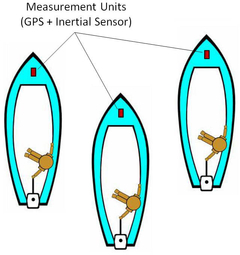
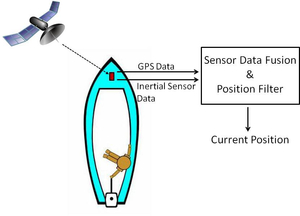 Articles in Conference ProceedingsIEEE Ninth International Conference on Intelligent Sensors, Sensor Networks and Information Processing (ISSNIP 2014), Singapore, 22.04.2014, pp. 1-6, 2014 (BiBTeX, Who cited this?)
Articles in Conference ProceedingsIEEE Ninth International Conference on Intelligent Sensors, Sensor Networks and Information Processing (ISSNIP 2014), Singapore, 22.04.2014, pp. 1-6, 2014 (BiBTeX, Who cited this?)
-
In many sports, the orientation of an athlete or a sports device plays a major role for the outcome on an event. The orientation can be determined using magnetometers and inertial measurement units (IMU) attached to the moving person or object. Applications of an orientation determination might be simple style evaluations or advanced pattern recognition based performance analyses and feedback systems. An example of the latter one is given by ski jumping. The length of a jump is highly influenced by the take-of angle and the orientation of the skis and the athlete during the jump. A pattern recognition based feedback system could analyze the jump phases and suggest the best possible orientation for each phase.

Our current research is focused on the orientation determination using angular rate measurements of gyroscopes and magnetometer data supported by the readings of an accelerometer. Quaternion based integration methods allow an accurate calculation of the orientation of a gyroscope (and thereby the sports device) at all times. Magnetometers can provide additional information about the orientation but are highly influenced by soft-iron and hard-iron effects. In combination with an accelerometer, gyroscope and magnetometer data can be fused to an accurate and robust orientation determination.
Further investigations in the area of IMU-based orientation determination are currently conducted in the fields of rowing (boat orientation) and scuba diving (diver's body pose and fin kick motion).
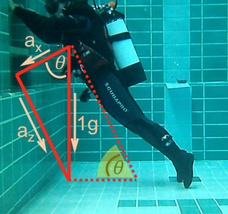
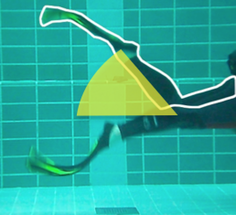 Articles in Conference ProceedingsWearable and Implantable Body Sensor Networks (BSN), 2015 IEEE 12th International Conference on (12th International Conference on Wearable and Implantable Body Sensor Networks (BSN)), Cambridge, USA, 09.06.2015, pp. 1-6, 2015 (BiBTeX, Who cited this?)Proceedings on Inertial Sensors and Systems Symposium (ISS) (Inertial Sensors and Systems Symposium (ISS)), Karlsruhe, 17.09., pp. 1-11, 2014 (BiBTeX, Who cited this?)
Articles in Conference ProceedingsWearable and Implantable Body Sensor Networks (BSN), 2015 IEEE 12th International Conference on (12th International Conference on Wearable and Implantable Body Sensor Networks (BSN)), Cambridge, USA, 09.06.2015, pp. 1-6, 2015 (BiBTeX, Who cited this?)Proceedings on Inertial Sensors and Systems Symposium (ISS) (Inertial Sensors and Systems Symposium (ISS)), Karlsruhe, 17.09., pp. 1-11, 2014 (BiBTeX, Who cited this?)
-
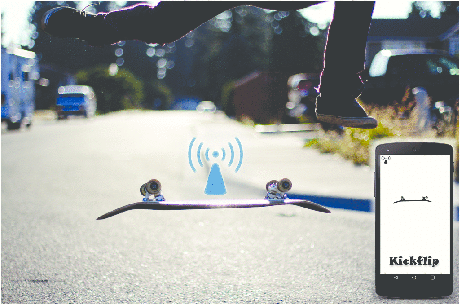
The application of pattern recognition algorithm to sports can lead to innovative methods of sports analysis and visualization as well as to improvements in the performance of athletes. A classification of sports events can basically be applied to any game sports, reaching from classifying kicks in soccer to strokes in tennis or tricks in skateboarding. In this project, inertial sensors are attached to athletes or sport devices and the collected data are used for further analysis and classification.
The basic classification pipeline contains a preprocessing step, feature extraction and the actual classification. Whereas previous projects already considered the extraction of generic features (e.g. statistical values of the inertial data), our goal is to define sports-related expert features. These expert features will based on the orientation of the sensor and thereby the orientation of the athlete or sport device.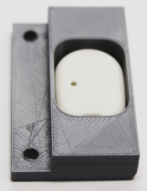
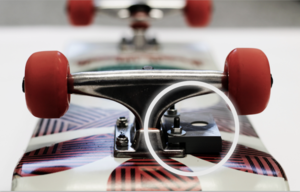
A typical example application is given by skateboarding. Most skateboard tricks show a typical signal sequence of the board’s rotation (see following figures). Although a classification that is only based on generic features already provides a reliable trick classification, future work will be to include information about the orientation of the board as expert features and thereby obtain even more significant results.
 Journal ArticlesWearable Real-Time Skateboard Trick Visualization and Its Community PerceptionIEEE Computer Graphics and Applications, vol. 36, no. 5, pp. 12-18, 2016 (BiBTeX, Who cited this?)Articles in Conference ProceedingsIEEE EMBS 13th Annual International Body Sensor Networks Conference, San Francisco, USA, 15.06.2016, pp. 89-93, 2016 (BiBTeX, Who cited this?)- (KDD Workshop on Large-Scale Sports Analytics), Sydney, Australia, 10.08.2015, pp. 1-4, 2015 (BiBTeX, Who cited this?)Workshop on Large-Scale Sports Analytics (21st ACM SIGKDD Conference on Knowledge Discovery and Data Mining), Sydney, Australia, 10.08.2015, pp. 1-4, 2015 (BiBTeX, Who cited this?)
Journal ArticlesWearable Real-Time Skateboard Trick Visualization and Its Community PerceptionIEEE Computer Graphics and Applications, vol. 36, no. 5, pp. 12-18, 2016 (BiBTeX, Who cited this?)Articles in Conference ProceedingsIEEE EMBS 13th Annual International Body Sensor Networks Conference, San Francisco, USA, 15.06.2016, pp. 89-93, 2016 (BiBTeX, Who cited this?)- (KDD Workshop on Large-Scale Sports Analytics), Sydney, Australia, 10.08.2015, pp. 1-4, 2015 (BiBTeX, Who cited this?)Workshop on Large-Scale Sports Analytics (21st ACM SIGKDD Conference on Knowledge Discovery and Data Mining), Sydney, Australia, 10.08.2015, pp. 1-4, 2015 (BiBTeX, Who cited this?)
-
Inertio-magnetic measurement units (IMU) are widely used in research projects and technical applications for motion analyses of vehicles, athletes, patients, etc. The IMU systems usually contain a three-axes accelerometer, three-axes three-axes magnetometer. In spite of the utilization in different fields, there is no standardized method for calibrating inertial sensors.
Furthermore, many research projects have to deal with sensor alignment problems. In medical studies for example, IMU sensors can never be placed at all subjects' bodies with exactly the same orientation. In applied scenrios of data acquisition in sports events, athleted cannot be bothered to deal with a perfect alignment of sensor and sensor attachment (at body or equipment). Intelligent alignment corrections are necessary to automatically correct for misalignments.The goal of this project is to develop alorithms for an easy to use in-field calibration including a reliable misalignment correction.

